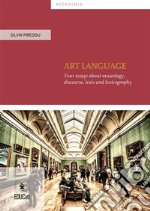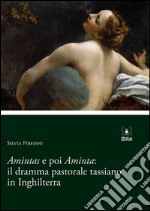Silvia Pireddu eBooks
eBooks di Silvia Pireddu
Art languageFour essays about museology, discourse, lexis and lexicography. E-book. Formato PDF Silvia Pireddu - Educatt, 2020 -
Museum professionals have learned to accept the idea that a museum is discourse, and an exhibition an utterance within that discourse (Swales, 1990, 2016). Research is needed though, to describe more consistently the way in which texts are produced and how languages, English in particular, mediate contents to the new public.Studying museum communication is important to curators and professionals to improve accessibility and broaden the public, but the complexity of present day museums cannot reduce communication to a basic task to be performed on a budget. Text writing is a key activity that goes well beyond the creation of guides, panels and labels possiblytranslated in different languages (Ferguson, Greenberg, & Nairne, 2005; Katan 2012; 2016). A linguistic along with a semiotic approach to textuality is needed to describe museum genres and improve their effectiveness and usage in the context of the new media (Garzone, Poncini, Catenaccio, 2007; Lazzaretti, 2016; Kranmer 2016).Excerpted from the Preface of the Author
Drama, Theatre & English. E-book. Formato PDF Silvia Pireddu - Educatt Università Cattolica, 2015 -
The purpose of this course is to learn English and increase students’ understanding and critical perception of English Drama. Lessons will focus on the elements of theatrical practice, on Drama as an art form and a social phenomenon. Participation in class/web forum discussion and sharing of “critiques” will enable students to improve their fluency and understand how English is used in different social, psychological and historical contexts.The aim is to develop their appreciation of Drama and stimulate theirknowledge of English for the performing arts.Each play will be considered in its screen version.
Amintas e poi Amintail dramma pastorale tassiano in Inghilterra. E-book. Formato PDF Silvia Pireddu - Educatt Università Cattolica, 2014 -
. La traduzione nel tempo ha perso una sua autonomia, anche nella sua forma didattica, per isolarsi in un mondo anti-poetico, allontanandosi cioè da una visione autonoma del fare artistico ed estetico che fino alle soglie della modernità industriale non aveva veramente distinto tra diverse tipologie e specializzazioni della fruizione/ produzione del testo. La storia delle traduzioni dell’Aminta evidenzia tutto ciò in modo assai preciso.Vogliamo allora valutare le “versioni” dell’Aminta nell’arco di tre secoli, da Abraham Fraunce fino a Leigh Hunt, partendo da una analisi stilistica e strutturale dei testi, per poi penetrarne il linguaggio ed evidenziare in una prospettiva storica l’evoluzione del “gusto” nei confronti del genere pastorale.(dall'Introduzione dell'Autrice)


